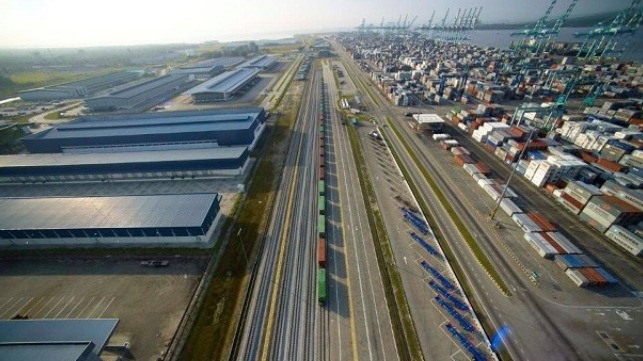
Published by Business Today, Free Malaysia Today, The Sun Daily & Biztech.asia, image from Business Today.
Although Malaysia is facing the worst quarterly economic contraction in more than two decades (17.1 percent), Malaysia’s Gross Domestic Product (GDP) growth on month-on-month basis, on the other hand, has shown us a positive development.
If we analyse the data carefully, GDP contracted at its steepest pace in April (-28.6 percent), but improved in May to a contraction of 19.5 percent and continued to strengthen by reporting a smaller contraction of 3.2 percent in June.
In the second quarter of this year (2Q20), agriculture and public consumption were the only two sectors that experienced expansion even though at moderate paces of 1.0 percent and 2.3 percent, respectively.
On the flipside, the other main components of GDP were seen contracting, including the private consumption – which is the major contributor to the total GDP (59.4 percent of GDP) and has reported a decline of 18.5 percent during the quarter. Consequently, many services sectors, such as retail and tourism, also remained weak due to this reason.
The reason behind this is simple – in April, where Movement Control Order (MCO) was still taking place, it had deterred many businesses especially the ones deemed as non-essential from running, thus contributing to the gloomy performance across most of the economic segments.
But then, as the economic activity gradually resumed under the Conditional Movement Control Order (CMCO) and then the Recovery Movement Control Order (RMCO) beginning early May, it has gradually revived our economy while at the same time has successfully curbed the Covid-19 pandemic.
Rationally, this economic catastrophe has already been expected especially by the economists, considering the massive shutdown in business activities and work obstruction in almost all economic sectors, not to mention the massive amount of money spelt out by the government to mitigate the impact of the pandemic on the rakyat and Malaysian economy.
While these moves may look like so-called jeopardizing the nation’s economic growth, it actually has become the tipping point for the economic short-term recovery.
According to the experts, Malaysia’s big contraction in 2Q20 has so far made Malaysia the worst-performing economy in the ASEAN region. It does make sense why Malaysia has become the hardest-hit country compared to the others as Malaysia is one of the strictest countries in implementing containment measures – which we know from the start will eventually severely affect our economy.
Nonetheless, government’s moves are now bearing fruit, as the pandemic is seen under control now since the number of Covid-19 cases has remained two-digits in these past few months.
Looking at the bright side, Malaysia seems to have gone through the worst moment, and now, we must rise again in restoring the country’s economy.
Said Prof Dr Hoo Ke Ping of the Kingsley Strategic Institute economics, “And certainly, our economic performance will be better than many other countries in the Asian region come the end of the year. They performed well when we implemented MCO, and now, it will be the other round”.
So, the question is – what can the government do or we as the rakyat can do to help our beloved country in reviving its economy? There are a few points that we can go about in general particularly in boosting consumption.
First, the government could increase direct fiscal injection into the economy in order to help the rakyat to gradually rebound from the Covid-19 economic downturn.
Through this initiative, which could be known as Bantuan Prihatin Nasional 2.0 (BPN2.0) under the National Economic Recovery Plan 2.0 (PENJANA 2.0), the government may want to introduce a new subsidy for household goods such as electrical appliances as a means to prop up private consumption.
Or perhaps, government could introduce vouchers that can be spent at selected local businesses – to help Malaysian households with daily expenses while supporting local merchants and vendors.
Also, it might be possible to do another round of stimulus that provides additional funding for small businesses to restart or further stabilize their businesses as well as enhancing the Hiring Incentive Programme (PENJANAKERJAYA) to promote job creation and at the same time increase employment prospect.
Next, in efforts to bolster the nation’s tourism industry, via the additional cash injections, the government could introduce a tourism digital voucher that can be used to ‘seduce’ Malaysians with a lot of discounts on travel packages.
For instance, through this digital voucher, Malaysians get to receive discounts on selected hotels and tourism products throughout the country or be offered discounted airline ticket prices, coupons for local attractions, and free entry to tourist sites.
Previously, this initiative had been introduced by Pakatan Harapan as part of the 2020 Economic Stimulus Package, so perhaps, this initiative could be pursued again by the current government as part of the strategy to mitigate the impact of the Covid-19 virus on the domestic tourism industry.
And to the rakyat, I know and understand if you think that now it is crucial for you to save. However, you need to know that if you use the opportunities given by the government to the best of your ability, you can assist the government in restoring our nation’s economy.
Not that I suggest you spend extravagantly, but what I want to convey here is, spend accordingly and make use of all the incentives that the government has provided. Your role might seem small here, but it has a significant impact on the country’s economy without you realising it.
Let’s help each other, shall we?
Nurafifah Mohammad Suhaimi is Research Assistant at EMIR Research, an independent think tank focused on strategic policy recommendations based on rigorous research.
